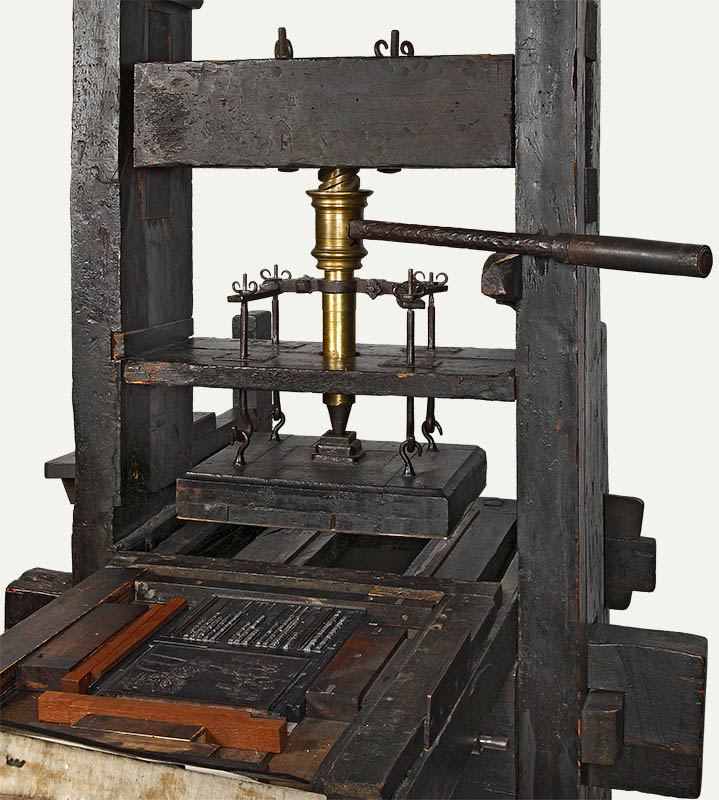European type printing
Gutenberg’s movable type was the beginning of everything one can call technical data processing. Gutenberg’s movable type meant that every spoken word received a promise that it might, if fortunate, appear some time (in print).
Friedrich Kittler, Buchstaben – Zahlen – Codes, 2001
The invention of printing using movable type by Johannes Gutenberg marks the beginning of a far-reaching technical/industrial and scientific/cultural revolution in the early modern era. Gutenberg needed about ten years to find the suitable working materials for type printing and to try out tools and work steps. He fell back on familiar techniques, improved and transformed them, but also invented new devices and processes. Among his individual inventions were, among others, the development of a type casting alloy, the construction of a casting instrument and various pieces of equipment for type setting and the construction of a printing press. Unlike Korean type printing, Gutenberg’s success was based on his method for the serial production of movable type as standard pieces in high quantities and identical quality. The key component here was the casting instrument which was the core piece in Gutenberg’s innovation. In around 1450, he began using his complex technology on a large scale to print the 42-line Bible.
Vital for the practical implementation of this new system for reproducing text was the coordination of the individual work steps from cutting the types to casting and setting the letters, right up to doing corrections and printing. This division of labour brought about new manual trades that had not existed before. As the prerequisite for the mass dissemination of information and knowledge, the European method of type printing spread throughout the world fast and remained largely unchanged for almost 400 years.

